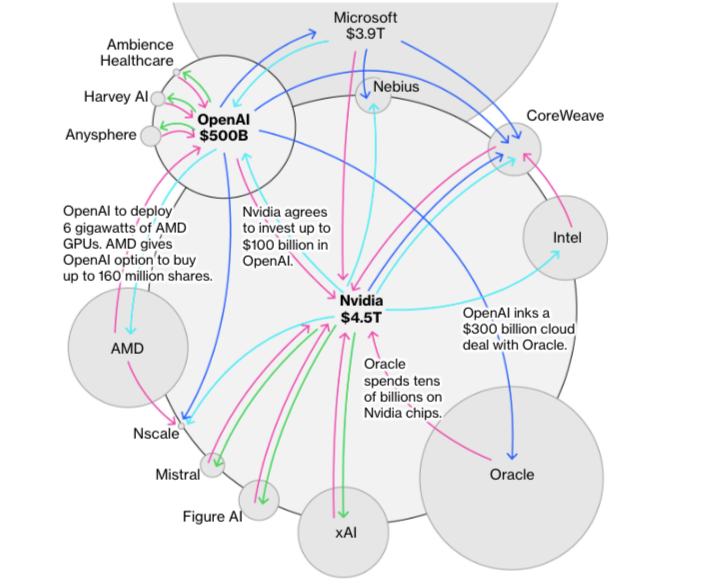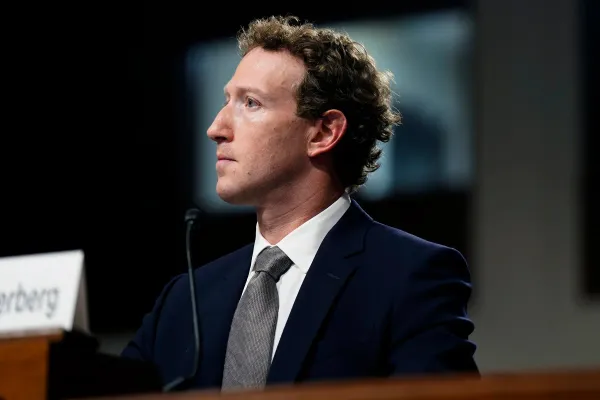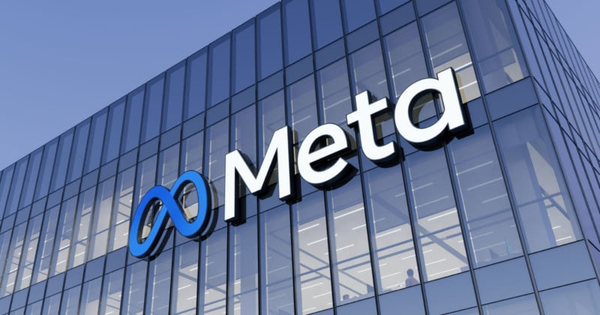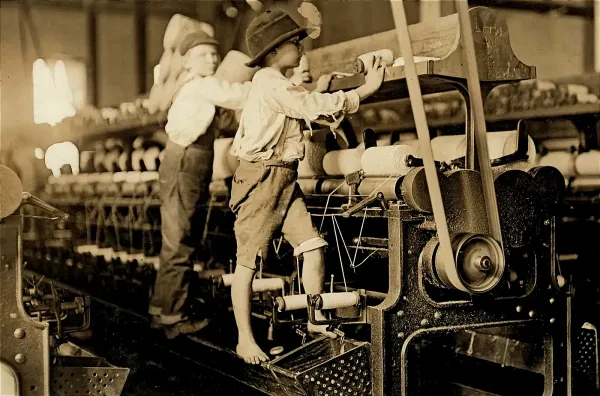Sometimes bubbles can be good

Does it feel like you are living in a bubble? According to a lot of experts, you are – a bubble created by hysteria related to a little thing known as artificial intelligence, which you may have heard of. Even Sam Altman, the CEO of OpenAI – and therefore the man who many people feel has inflated this bubble more or less singlehandedly – has admitted that we are in a bit of a bubble right now. And when the bubble inflaters admit we are in a bubble, you know it's real, right? But then, smart financial and tech analysts have been warning about bubble-like (bubblicious?) conditions for some time now. In July, the chief economist at Apollo Global Management, a massive hedge fund, warned that the top 10 AI-related stocks were completely detached from reality, and that the bubble around AI was worse than the investment hype around internet stocks in the late 1990s, just before the dot-com stock-market crash that vaporized an estimated five trillion dollars in theoretical market almost overnight.
It may feel sometimes as though AI products and companies and stocks have been around for a long time, but ChatGPT was launched less than three years ago. At first, it seemed like a harmless toy, and the company that created it, OpenAI, was also seen as mostly harmless – a nonprofit, research-oriented outfit. That impression changed quickly, however, as OpenAI started to do large funding deals with Microsoft and others, and then there was the whole boardroom "let's get rid of Sam Altman" drama in 2023, which ended with a bunch of people leaving and Altman retaining control (I wrote about it here if you're interested). That was in part about whether AI research was proceeding too quickly and whether AI would achieve human-like intelligence – known in the biz as AGI – and then turn evil and destroy humanity (I wrote about this as well for Torment Nexus). Suffice it to say that no one really cares about any of that any more, everyone is racing towards AGI as quickly as possible so they can cash in.
From an investment point of view, after crypto currency failed to ignite a big enough pile of money for tech investors, a lot of that greedy money poured into AI investments, and found its way to several of the big names, including Nvidia, the chip-maker whose graphics processing units (GPUs) were once used primarily for playing video games, but now are acquired by the truckload in order to power giant AI server farms that have to boil the ocean in order to produce AI "slop" (as the kids like to call it) like videos of Karl Marx breakdancing or Albert Einstein talking about the new iPhone or painter Bob Ross standing in his studio playing Call of Duty, or SpongeBob SquarePants flying an airplane into one of the towers of the World Trade Center. Nvidia's market value is close to $5 trillion, or about the same as all the vaporized market value in the entire dot-com bubble. OpenAI, which has done some new rounds of funding, is worth about $500 billion, the most valuable private company in the world, and possibly in history.
A lot of the funding deals that went into that market cap are also being cited as evidence of an AI bubble, especially since they have a rather circular aspect to them: Company A invests money in Company B so that Company B can buy products from Company A, etc. As Bloomberg explained, Nvidia recently agreed to invest up to $100 billion in OpenAI to pay for a massive buildout of OpenAI's data centers, and OpenAI agreed to stock those data centers with lots of chips produced by, you guessed it... Nvidia. OpenAI also recently signed a deal worth about $300 billion to use Oracle's cloud-computing services, and Oracle also agreed with Nvidia to buy tens of billions of dollars worth of the company's chips. OpenAI has also agreed to buy a ton of chips from Nvidia's main competitor, AMD, and AMD has given OpenAI the option to acquire a bunch of its shares in the bargain, which would make the AI company a major shareholder.

Nvidia has also cut an investment/product purchase deal with xAI, Elon Musk's company. As Bloomberg describes it: "The companies, which ignited an AI investment frenzy three years ago, have been instrumental in keeping it going by inking large and sometimes overlapping partnerships with cloud providers, AI developers and other startups in the sector. In the process, they're now seen as playing a key role in ratcheting up the risks of a possible AI bubble by inflating the market and binding the fates of numerous companies together. OpenAI alone has now struck AI computing deals with Nvidia, AMD and Oracle Corp. that altogether could easily top $1 trillion. Meanwhile, the AI startup is burning through cash and doesn't expect to be cash-flow positive until near the end of the decade." According to a recent estimate, OpenAI brought in more than $4 billion in revenue in the first half of this year but lost a total of $7.8 billion.
Note: In case you are a first-time reader, or you forgot that you signed up for this newsletter, this is The Torment Nexus. You can find out more about me and this newsletter in this post. This newsletter survives solely on your contributions, so please sign up for a paying subscription or visit my Patreon, which you can find here. I also publish a daily email newsletter of odd or interesting links called When The Going Gets Weird, which is here.
Virtuous cycle or circle jerk?

One man's circuitous funding chain is another man's "virtuous, positive cycle" as AMD chief executive Lisa Su described it. And let's not forget that the Trump administration is also part of this particular circle jerk, since it now owns a significant stake in chip-maker Intel, and has also ordered that it be paid a portion of the revenue from Nvidia and AMD's chip sales to China. So is a bubble in AI stocks really something we should be concerned about as ordinary citizens? Yes and no. Obviously, if your stock portfolio is heavily weighted towards Nvidia and AMD and Microsoft shares, then you should probably be concerned, or at least wary. If it isn't, then the damage is likely to be moderate – but there will definitely be some, depending on how and when the bubble pops. If it lets out some air gradually, that's fine – markets are prepared for that. But if it collapses in a sudden implosion of expectations, that's not great. It's not directly comparable, but the unwinding of the US housing bubble in 2008, which was driven by mortgage debt instruments and lax standards by lenders, caused a massive economic downturn.
Other famous bubbles throughout history haven't caused anywhere near as much damage. The Dutch "Tulip Mania" bubble in the 1600s is likely the first thing people think of when the topic of market frenzies comes up, since stories about individual tulip bulbs being worth more than a house have been circulated by books like Extraordinary Popular Delusions and the Madness of Crowds, published in 1841. Some modern research has poured water on much of the reporting about this market bubble, however, arguing that most of the examples used about the mania come from satirical songs and pamphlets that were circulated at the time. Prices did rise dramatically, and there were definitely people who lost investments and their theoretical market value, much as people did in the dot-com bubble, but there was no long-term impact on either the Dutch economy, the tulip trade, or the economy of neighbouring countries or Europe itself.
The South Sea investment bubble of the 1700s is in some ways a better analogy for the AI bubble. In that case, trading of shares in the South Sea Company became a frenzy that pushed stock prices to ridiculous levels, because the corporation – a public-private partnership with the British government – had a monopoly on trade with South America. In reality, there was virtually no trade between Britain and South America at the time, since Spain controlled most of it, and therefore what the South Sea Company mostly did was trade government debt. The 1700s being what they were, there was a ton of corruption, the value of the debt collapsed and thousands of people lost their investments – including Isaac Newton, who said: "I can calculate the movement of the stars, but not the madness of men." The popping of that bubble significantly impaired the British economy, primarily because the government was directly involved.
There are a number of things that distinguish the AI bubble from previous bubbles. For one thing, unlike the dot-com bubble, companies like Nvidia and even OpenAI have significant revenues, and in Nvidia's case they also have profits -- $26 billion in the first half of this year. The products they sell are not vaporware (although the things they are used to build might be). Even OpenAI, for all the deals it has done with inflated notional value, has a significant amount of actual revenue in the form of real cash, whether it's from Microsoft (which wanted to jump-start its own AI efforts) or from the dozens of companies that have licensed ChatGPT, or the millions who pay for it. Is OpenAI worth $500 billion? Who knows. But it is clearly worth something, unlike many of the dot-com companies that generated hundreds of millions in market cap based on little more than a website and a dream that everyone would buy their pet food online.
That brings me to a related bubble: the investment in telecom equipment, primarly in fiber-optic cable and fiber-optic capacity, that came along with the dot-com boom. Investors in this bubble, including telecom companies, assumed that if millions of people were going to buy their pet food online, then the internet would need to be built out significantly and upgraded to faster speeds. And they were right! They were just completely wrong on how quickly this needed to happen. So they spent billions of dollars on laying cables and building out equipment, and that torpedoed their stock prices in the short term. But in the longer term, they were completely right about the demand for fiber, and for real-time internet services of all kinds. As Silicon Valley venture investor Marc Andreessen likes to point out, many of the early web ventures that got ridiculed in the late 1990s have since become huge and profitable businesses (Webvan, etc.)
Like a pool of dark fiber?

One key part of the success of these early internet companies – including Amazon, which was widely dismissed as a money-losing waste of time and is now worth $2.5 trillion – is that hundreds of millions of people with high-speed connections got online and made many of those ideas viable. And high-speed connections were as ubiquitous and cheap as they were because so many telecom companies had spent billions investing in fiber optic cables. In other words, the bubble that popped and destroyed billions in value laid the foundation for the creation of billions of dollars in value down the road. It's not usually included in the list of great financial bubbles, but there was an explosion of for-profit companies after electricity was invented, most of which went bankrupt. This frenzy helped bring in the Great Crash of 1929, but this financial frenzy also helped lay the foundation for an industry that we now rely on, which provides cheap and reliable light and power for billions of people. Here's Fortune:
Perhaps the most instructive parallel for today's AI boom lies in the massive infrastructure overinvestment that preceded the dot-com crash. Telecommunications companies laid more than 80 million miles of fiber optic cables across the U.S., driven by WorldCom's wildly inflated claim that internet traffic was doubling every 100 days, far beyond the actual annual doubling rate. Companies like Global Crossing, Level 3, and Qwest raced to build massive networks to capture anticipated demand that never materialized. The result was catastrophic overcapacity. Even four years after the bubble burst, 85% to 95% of the fiber laid in the 1990s remained unused, earning the nickname “dark fiber.” Corning, the world’s largest optical-fiber producer, saw its stock crash from nearly $100 in 2000 to about $1 by 2002. Ciena’s revenue fell from $1.6 billion to $300 million almost overnight, with its stock plunging 98% from its peak.
Obviously, it's a stretch to argue that AI is going to help usher in a cheap and renewable resource like electric power, or that what it gives birth to will provide the equivalent of light and heat for billions (although that's not to say it won't!). The reality is that we don't really know what AI will or could produce in the future – not even Sam Altman knows – and I'm not enough of a techno-utopian to make the claim that it will be as beneficial as electricity, or even tulips for that matter. But even the most skeptical AI observer has to admit that there are signs of potential benefits that would otherwise either not happen at all, or would take decades longer than with the help of AI – things like finding new drug technologies or recombinant DNA methods for treating diseases like Parkinson's and Alzheimer's, or finding early evidence of cancerous tumours, or diagnosing a variety of illnesses and diseases much earlier than we have been able to with current technologies. These things have potentially huge benefits!
Of course, bubbles that pop can cause havoc, not just in stock market terms but in terms of people's everyday lives, and in some cases can leave damage in their wake that takes decades to repair. If your investment advisor puts all your holdings in Nvidia and the AI bubble blows up, I am not about to argue that you should be overjoyed because of the ancillary benefits AI might bring to your offspring. But the vast sums of money that go chasing after bubbles like electricity or fiber can also create pools of cheap equipment, services, and knowledge that can lead to huge advancements. Perhaps the Stargate data center colossus that OpenAI wants to build (yes, it's really called that) might wind up empty someday – but what other things could all of that server capacity and the networks of AI agents being built now produce, at a fraction of the cost if they were being built today? Breakthroughs in space travel? Medicine? Cheap handheld fusion reactors that might power a DeLorean time machine? Who knows.
So bubbles and inflated expectations can cause chaos, yes – but they also drive investment in new technologies, and those investments don't all disappear when the bubble pops. Sometimes they are the foundation of new businesses and new services, which either wouldn't exist if the bubble didn't happen, or would have taken much longer and been much more expensive. I'm not asking you to cheer on the bubble makers! I'm just saying bubbles aren't all bad.
Got any thoughts or comments? Feel free to either leave them here, or post them on Substack or on my website, or you can also reach me on Twitter, Threads, BlueSky or Mastodon. And thanks for being a reader.



